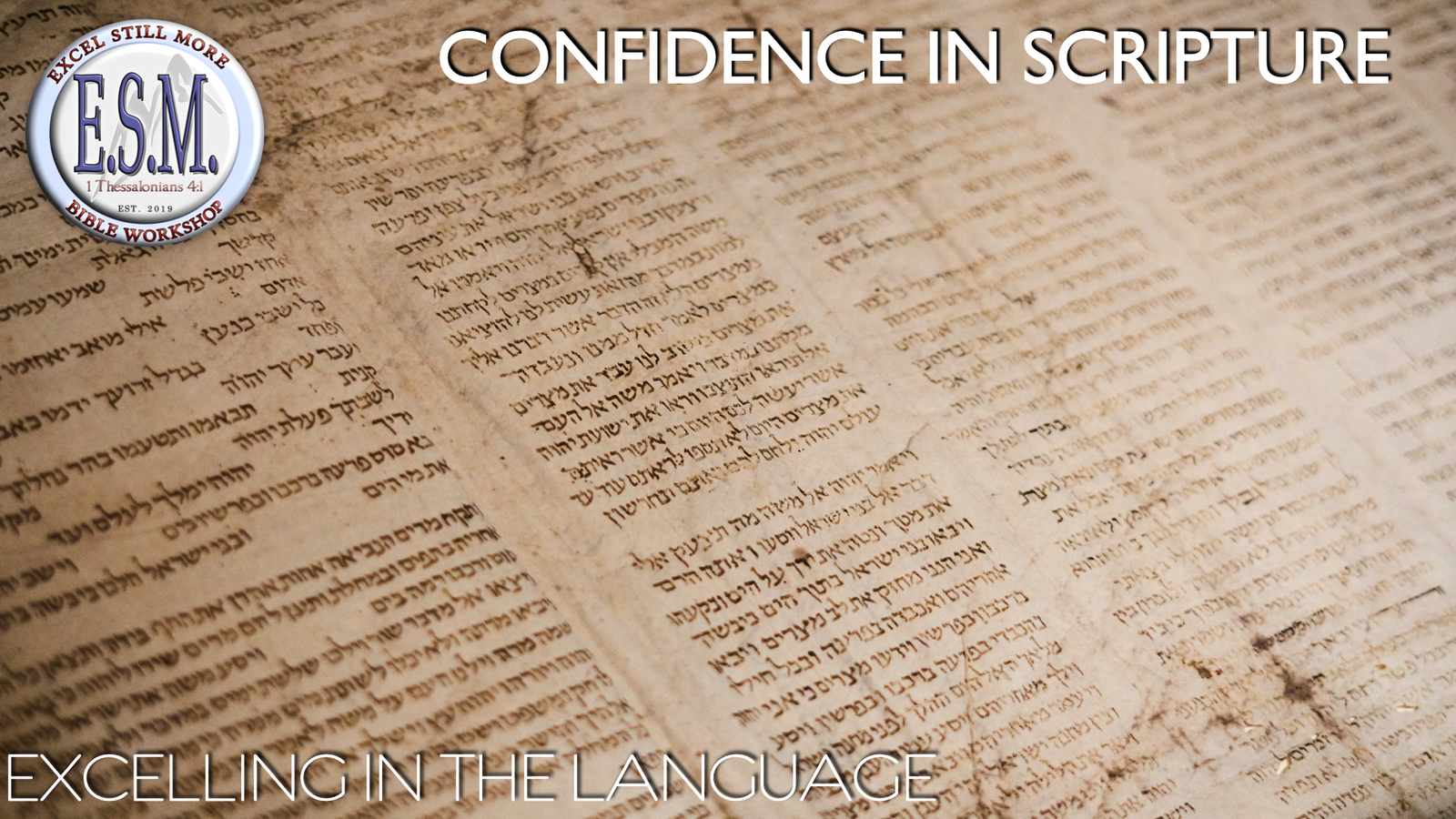In this short space, I want to continue with an idea that I expressed in my last article, namely,
“that God has preserved his Word, and that we can be confident in it”
Several years ago, while I was living in the Cayman Islands, a very friendly Mormon couple sat with me and my wife, Miranda, attempting to persuade us into their religion. They could see that Miranda and I had a special bond—one that we’d obviously love to last forever. So, keyed by those sentiments, they told us about a special ritual in Mormonism called “sealing.” This ritual performed only in Latter Day Saints temples, is done expressly so that families can remain connected for all of eternity—so that husbands and wives can remain married for all of eternity.
After they shared these beliefs with us, I gently asked them if they believed in the words of the New Testament. This they affirmed, so, I read to them what Jesus said in Matthew 22:30:
“For in the resurrection they neither marry nor are given in marriage, but are like angels in heaven.”
“What do you think about Jesus’ statement concerning marriage in the next life,” I asked.
Their response was simply this:
“We don’t know; maybe the text of the Bible has been altered since it was originally composed.”
This response is not at all unique. It is extremely common, and I’d say its prevalence is only increasing as our society rejects larger and larger chunks of Scripture. The argumentation has a powerful base, doesn’t it? Human beings are flawed, and therefore, we cannot be certain that these manifold copies of Scripture maintain any degree of accuracy to the autographs. After all, the original writings were composed thousands of years ago.
But this line of reasoning doesn’t just eliminate parts of Scripture. If we can’t be confident in Scripture’s inerrancy, then we cannot be confident in any of it. Who’s to say that Jesus really walked on water? Who’s to say marriage is a divine institution between one man and one woman for life? Of course, the Bible says so, but if we believe the Bible has been altered through the years, what gives us the right to lean on some parts of it but not others?
Fortunately, we can be confident in it. Right now, there are nearly 6,000 Greek manuscripts of the New Testament, and that number is increasing every year. What this means is that from the early second century all the way to 1516 (when Erasmus compiled the first-ever printed edition of the Greek New Testament), we have an extensive witness to the original autographs of Scripture.
We are able to look back to the earliest manuscripts, and we can track the development of subsequent manuscripts through the ages. What’s remarkable is that, though these were all copied by hand, there is relatively little variance across that 1500-year span. This is why you may read a King James Version of the Bible in a congregation of people using the New American Standard Bible, and everybody will be on the same page.
Here’s what I mean: The King James Version was constructed using a series of manuscripts from the Byzantine period, most of which are significantly more contemporary in their dates. However, the New American Standard Bible was constructed using a broad collection of manuscripts, spanning a much larger geographical area and including a much earlier text base. Despite the varying manuscripts each of these versions used, there is an overwhelming similarity between them. In fact, most would agree that any disparities between them are of little or no theological consequence.
Let me help to illustrate why this is so valuable for building our confidence in Scripture. Imagine that you found a book in your backyard in which a history of the Mayan civilization was chronicled. This book provided you with information never before heard, and it gave illustrative details to what was formally only known generally. What a great find this would be. But imagine that the deceased historian who wrote the book did so only a few hundred years ago. Is some of your confidence in these historical details now lost? Perhaps so. Here’s a relatively recent historical record and the span of time between it and the Mayan civilization is grand. Perhaps the historian simply made these things up!
So, you might shelf that book. You might not think much about it anymore. But what if, with the passage of time, older and older histories began to confirm the details in your more recent history? You’d grow in your confidence.
This, dear reader, is precisely what is happening with the Scriptures of our Bibles. We are, almost daily, unearthing additional manuscripts of the Bible. And, irrespective of where they are found, or how old they are, the details overwhelmingly confirm what we have written in English on our shelves and in our homes.
There is no valid reason to suggest that the text of Scripture changed through the ages, for our contemporary manuscripts and our most ancient ones are vastly in agreement. As we unearth more and more of these texts, we are able to correct even the minutest of scribal mistakes. Rest assured, in the Bible, you have. God, by his great providential hand, has preserved his Word for all posterity.
Daniel Mayfield
"Daniel serves as a preacher and teacher at the Oldham Lane Church of Christ in Abilene, Texas. He does this work with the invaluable aid, wisdom, and encouragement of his wife, Miranda. They have two young sons, Judah and Zion, and one beautiful daughter, Eden. Daniel had served in Oklahoma for nearly five years, before which time he and Miranda served as missionaries in the Caribbean. Daniel is a graduate of both Bear Valley and Oklahoma Christian University. His greatest passion is to preach the gospel of Jesus to anyone who will listen."






